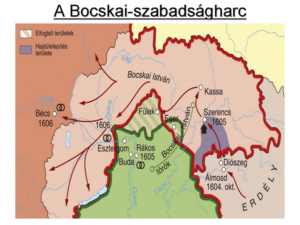King Habsburg Rudolf of Hungary, Emperor of the HRE (1552-1612)

Emperor Rudolf II of the Holy Roman Empire was reigning over the Kingdom of Hungary as King Rudolf I. When he died, he was “only” an Emperor, not a king. His father was Maximilian (Hungarians called him Miksa) who was also the Emperor of the HRE, and also Bohemian and Hungarian king (1564-1576). Rudolf was born as his first son on 18 July 1552, in Vienna. He was brought up in Vienna where he grew up with the sons of famous Hungarian aristocrats like Nádasdy Ferenc and Pálffy Miklós. Then, he received a strict Catholic education in the court of his uncle, the Spanish King Philip II. (Please, note that I use the Oriental name order for Hungarians where family names come first.)

Rudolf was crowned as Hungarian and Bohemian king still in his father’s life in 1572 and in 1575 and he was also accepted as the future German-Roman Emperor. When his father died in March 1576, he occupied his throne. He was a devoted Roman Catholic and never got married but had many bastards from his countless concubines. His character was rather hesitant and suspicious but often he was generous and confident, many people regarded his strange behavior as madness.

He decided to give the tasks of governing to his younger brothers and moved to Prague’s castle in 1583 where he led a rather lonely life, his interest turned to alchemy and studying the stars. He invited many famous scientists to his court, like Johannes Kepler or Tycho de Brache. He was collecting paintings, precious stones, and minerals and employed renowned artists like Hans von Aachen, Adriaen de Vriest, and Georg Hoefnagel. His passions have cost plenty of money but at the same time, he established a matchless late-Renaissance – Manierist cultural center in Prague.

He allowed the re-Catholization movement to gain ground which was aggressively targeting the Reformed communities. It made especially the Protestants of Hungary upset. Many Hungarian high lords fell victim to this, like the Evangelic Illésházy István or the Reformed Bocskai István. The latter chose to take up arms and it triggered an uprising in Hungary. You can read more about the uprising of Bocskai here:
The 15-Year War broke out in 1593 against the Turks which was causing more and more suffering to the inhabitants of Hungary. The destructions of the foreign mercenary armies, the forced Catholization, the harassment of the Protestants, the made-up court cases against the Hungarian high lords which intended only to deprive them of their lands, and the long and unsuccessful war with starvation and plague in its wake made more and more people of different social classes turn away from Rudolf. It was even more upsetting to the Hungarians that at the same time, they could see how the Court was overspending and wasting money on luxurious things while the unpaid mercenaries were raging and plundering the countryside.

The ruler gradually sank into his private life and passions and lost contact with his subjects. Even his younger archduke brothers turned against him, especially Matthias who had been governing Hungary and Austria since the first years of the 1600s. Archduke Matthias found the connection to the Austrian, Moravian, and Hungarian-Croatian Estates and supported by them, took up arms against his brother and led his army against him in the summer of 1608. As a result of this, Rudolf resigned on 25 June by his “own will” from the kingship of Hungary and the provinces of Austria in Lieben.

Rudolf ceded the Hungarian Holy Crown and the coronational pieces of jewelry to the Hungarian estates. Yet, he kept the title of Holy German-Roman Emperor and Bohemian King. As for Bohemia, he had to hand it over to his younger brother in 1611 who had already been crowned in 1608 as a King of Hungary as King Matthias II. Interestingly enough, during his last years, Rudolf began to oppose his Catholic principles, and in 1609 he declared the freedom of religion in Bohemia, even for the peasants. At the same time, he ceded the University of Prague to the Estates and allowed the building of Protestant churches even on royal lands.

He lost his title of a Bohemian King in quite an interesting way. When it became clear to him that Matthias wanted to have himself elected as a Roman King (it was the first step to getting the title of the Roman Emperor), Rudolf instigated his relative, Archduke Leopold (the Bishop of Passau and Strassburg) to do the same and have himself nominated as well. Leopold didn’t hesitate for long and immediately sent mercenaries to Prague to defend Rudolf. Yet, the soldiers rather began plundering and left the city after a time, causing the Bohemian Estates to turn away from Rudolf, too.

It was the time when Rudolf already would have allied himself even with the Protestant German princes but he died before that.
The “shadow emperor” died without allies on 20 January 1612 in Prague. He was buried there next to his father and grandfather, King Ferdinand I., in the St Vitus Cathedral.

Source: Szibler Gábor
Dear Readers, I can only make this content available through small donations or by selling my books or T-shirts.
If you like my writings, please feel free to support me with a coffee here:
You can check out my books on Amazon or Draft2Digital, they are available in hardcover, paperback, or ebook:
https://www.amazon.com/dp/198020490X
or at https://books2read.com/b/boYd81


My work can also be followed and supported on Patreon: Become a Patron!http://Become a Patron!




